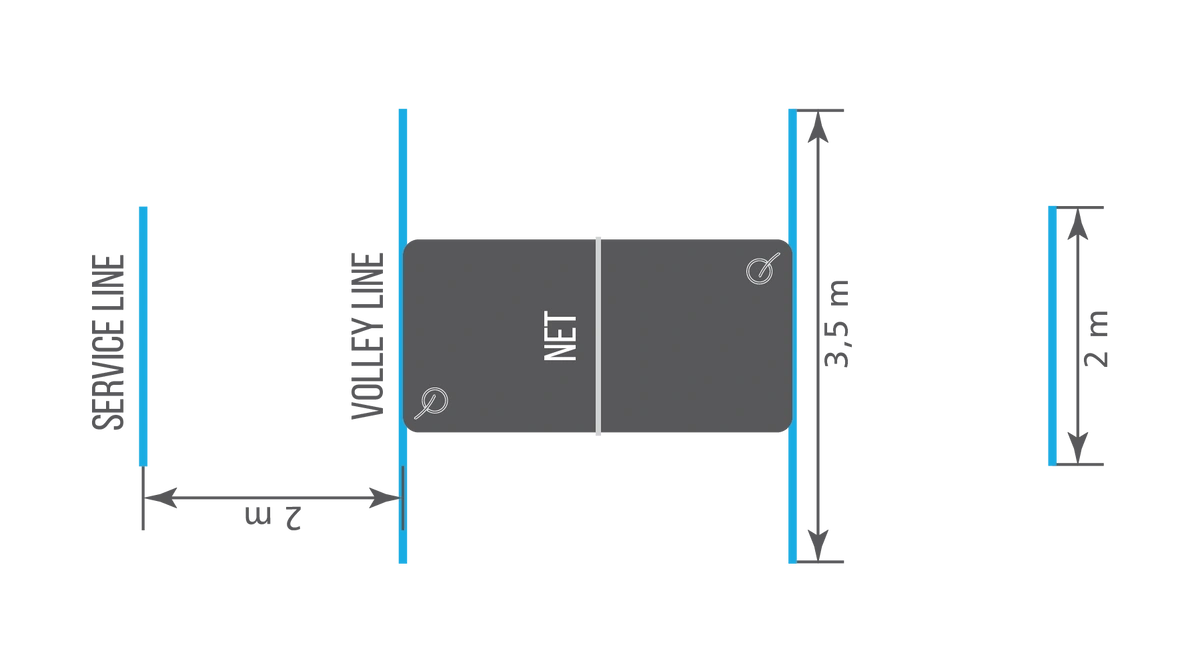The main rules of Para Teqis
GENERAL RULES
- Para teqis can be played in two ways:
- Singles: by 2 wheelchair players in a singles match.
- Inclusive doubles: by 4 players in an inclusive doubles match, where each pair must consist of one wheelchair player and one able-bodied player.
- The ball can be played in three different ways:
- with a volley - the player hits the ball before it bounces on the table.
- with a boardshot- the player hits the ball after it bounces on the table.
- It is allowed to let the ball bounce a maximum of twice on the table before returning the ball to the other side.
- In singles, the player has to return the ball to the other side in one shot.
- In inclusive doubles, the players must take turns hitting the ball back to the opponent's side.
- The ‘doublepoint’ is a chance to gain 2 points instead of one in a single rally. The ‘doublepoint’ can only be awarded to the player/team who requested it and legally scored the point. A player/team may only request the ‘doublepoint’ if they have not yet reached 10 points in that set.
- Each team has the right to request one 'doublepoint' during a match.
- Players are allowed to touch the table with their racket, but it is forbidden to touch the table with any part of the player’s body, clothes, or other equipment when returning the ball before the point of contact. In dangerous situations, it is allowed to touch the table with one hand without the racket after hitting the ball.
THE PARA TEQIS COURT
- Para teqis is played with the following equipment: a beach tennis or padel racket and a Play and Stay Stage 1 (green) tennis ball.
- Para teqis is played on a minimum 8 m long and a minimum 4 m wide court.
- The TEQ™ table must be placed in the mathematical center of the court.
THE SCORING SYSTEM
- A para teqis match is won by winning one or more sets depending on the competition.
- One set is won when a player or team reaches 12 points with a deciding point at 12 all.
- The final set of the match must be won by 2 clear points and at 12 all each player or team will serve only one point before becoming the receiver.
THE SERVICE
- The server has one chance to execute a successful service.
- The server must serve from anywhere alongside the service line.
- During the service, it is allowed to serve from inside the service line, but at least one of the rear wheels of the wheelchair must touch the line. In inclusive doubles, the able-bodied player must serve from behind the service line.
- The serve has to be an underarm serve where the movement of the racket during the contact point must be upward.
- The ball must bounce once anywhere on the opponent’s side of the table.
- If the serve hits the net it is considered a fault.
- The service is rotated every four points.
RETURN
- The service must be allowed to bounce at least once on the TEQ™ table before the receiver touches the ball.
- The ball can bounce a maximum of twice on the receiver’s side of the court.
Click here to download the "The Official Rules of Para Teqis" document
Click here to download the "Para Teqis Classification Regulations" document

